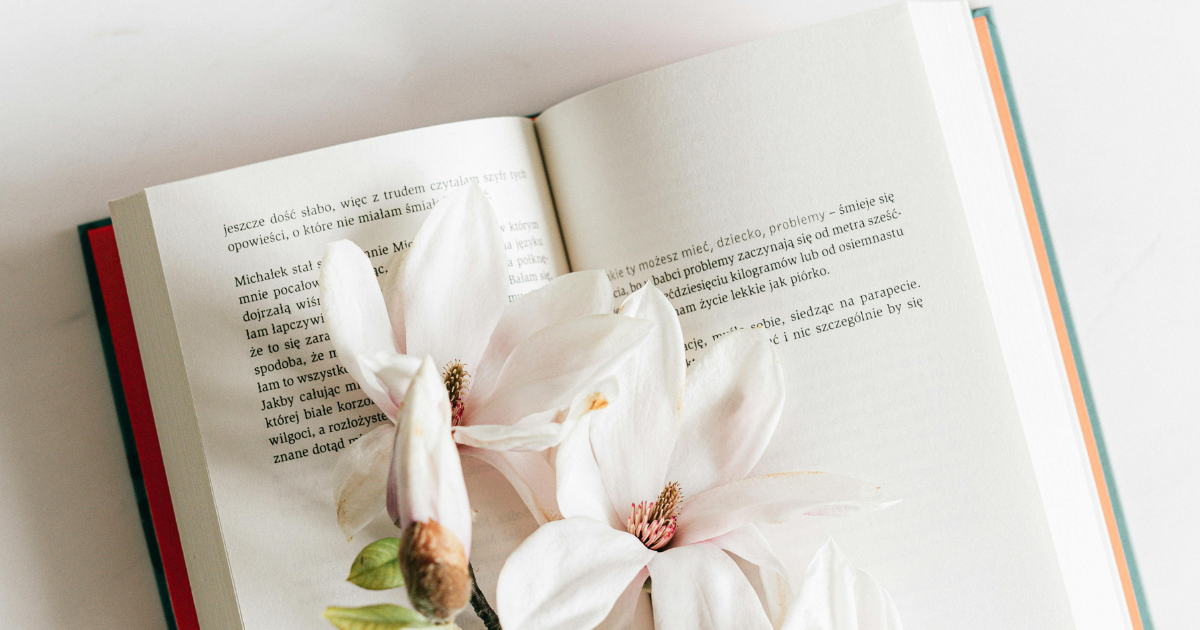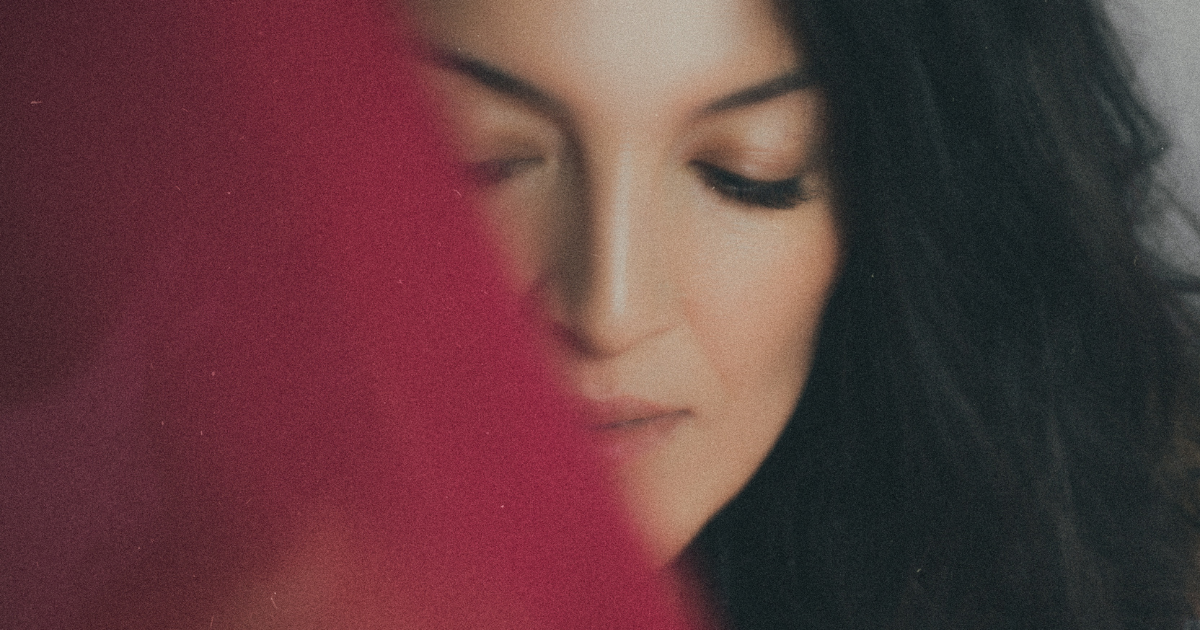Layers of memory: when traditions speak through contemporary art
«Qatlama» – an exhibition with reminiscences

On May 10, the Human House gallery felt especially warm: this time, the occasion was the Qatlama exhibition, which intertwined the layers of Uzbek traditions with the present day.
Where did the name of the exhibition come from?
Qatlama is an Uzbek layered flatbread, fried in oil. Its golden layers reflect the multifaceted nature of our traditions. From family rituals and textile traditions to musical heritage and crafts, cultural practices continue to live within us, adapting to societal changes. Like precious threads, they connect the present with the past, giving daily life a touch of the sacred.
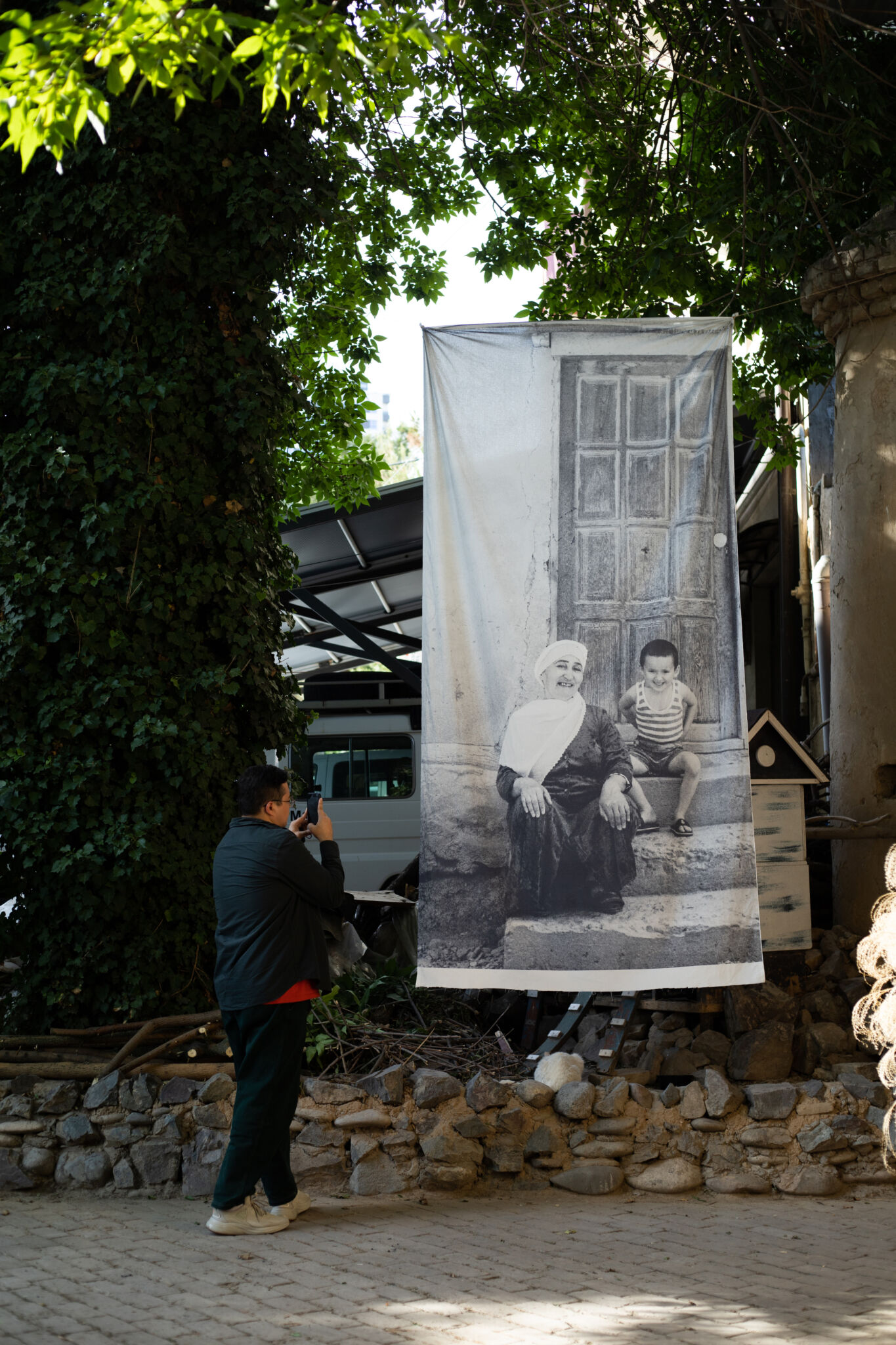
Today, it is particularly interesting to observe how traditions influence contemporary art, enriching culture and inspiring artists, who incorporate them into their personal expression. The visual language of the masters gives tradition a voice that sounds new, yet still recognizable. And how to maintain the essence, authenticity, and soul of these cultural codes – this is one of the key questions of our time.
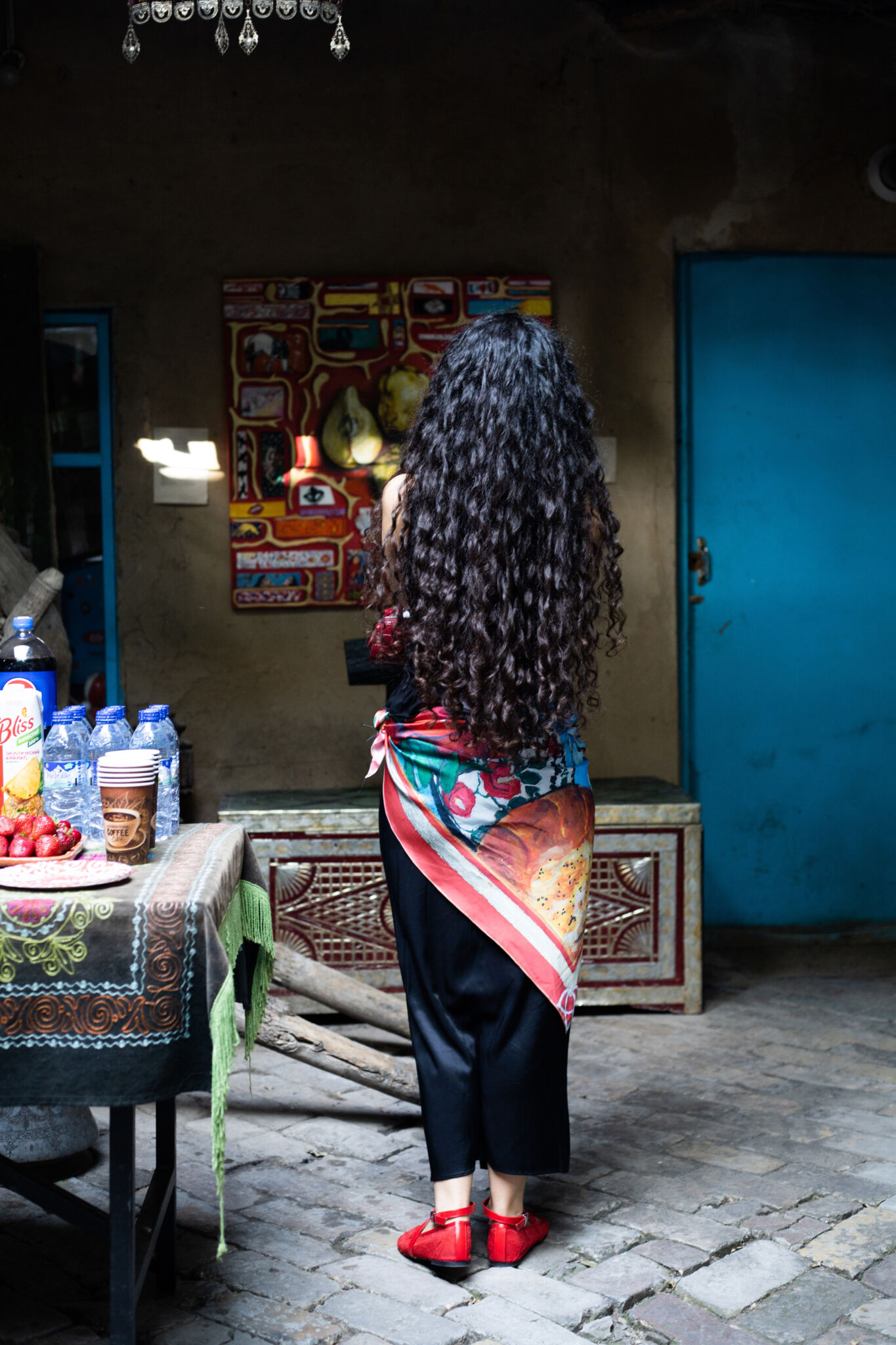
The guests were warmly welcomed by the exhibition’s curator, Svetlana Astakhova. We were welcomed by a young woman with chestnut hair, dressed in an elegant black dress, whose fiery thread that evening connected ritual culture and contemporary art.
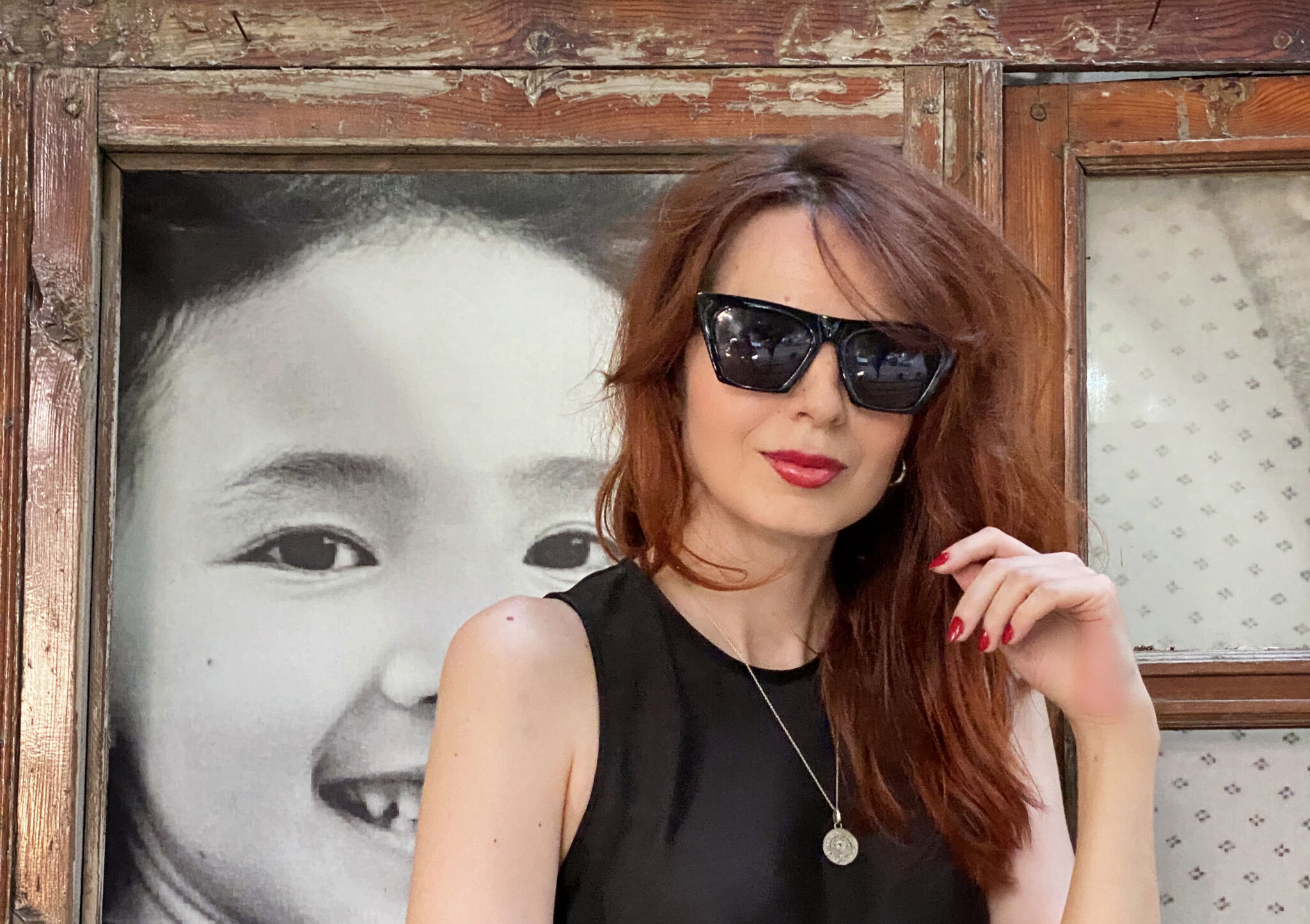
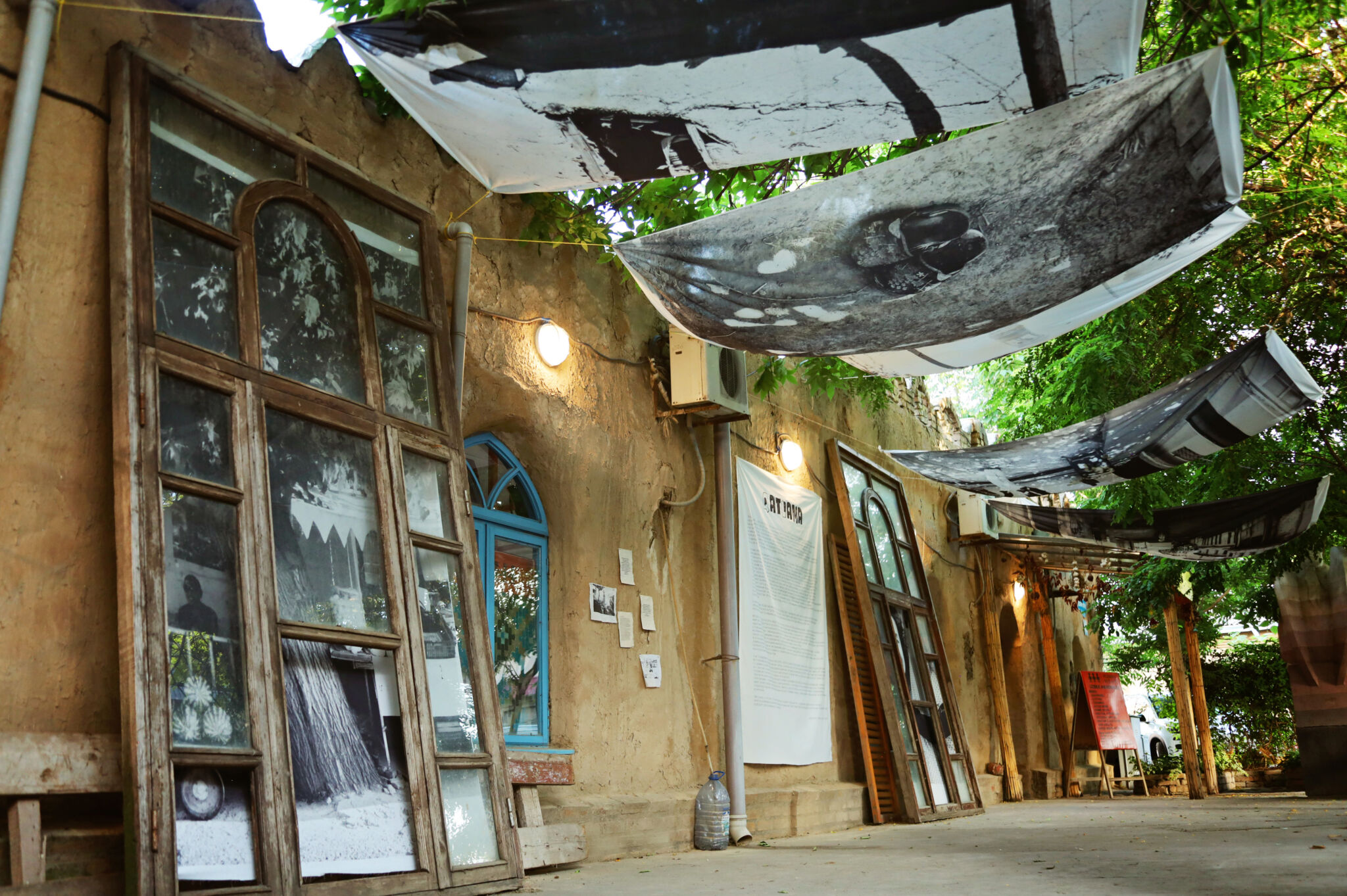

The vivid houses in Laziza Tulaganova’s works evoke a deep sense of anxiety about preserving the unique national appearance of the city, which is dear to the heart of every resident.
"We need to preserve the old town, the authenticity of our Tashkent, as it is a historical heritage, an open museum. Every street is unique and beautiful. I try to feel the atmosphere and convey it to the viewer, to filter it through myself and show the city as I see it. Color, forms, and perspectives. In this way, I preserve the face of the disappearing city on my canvases," says Laziza.
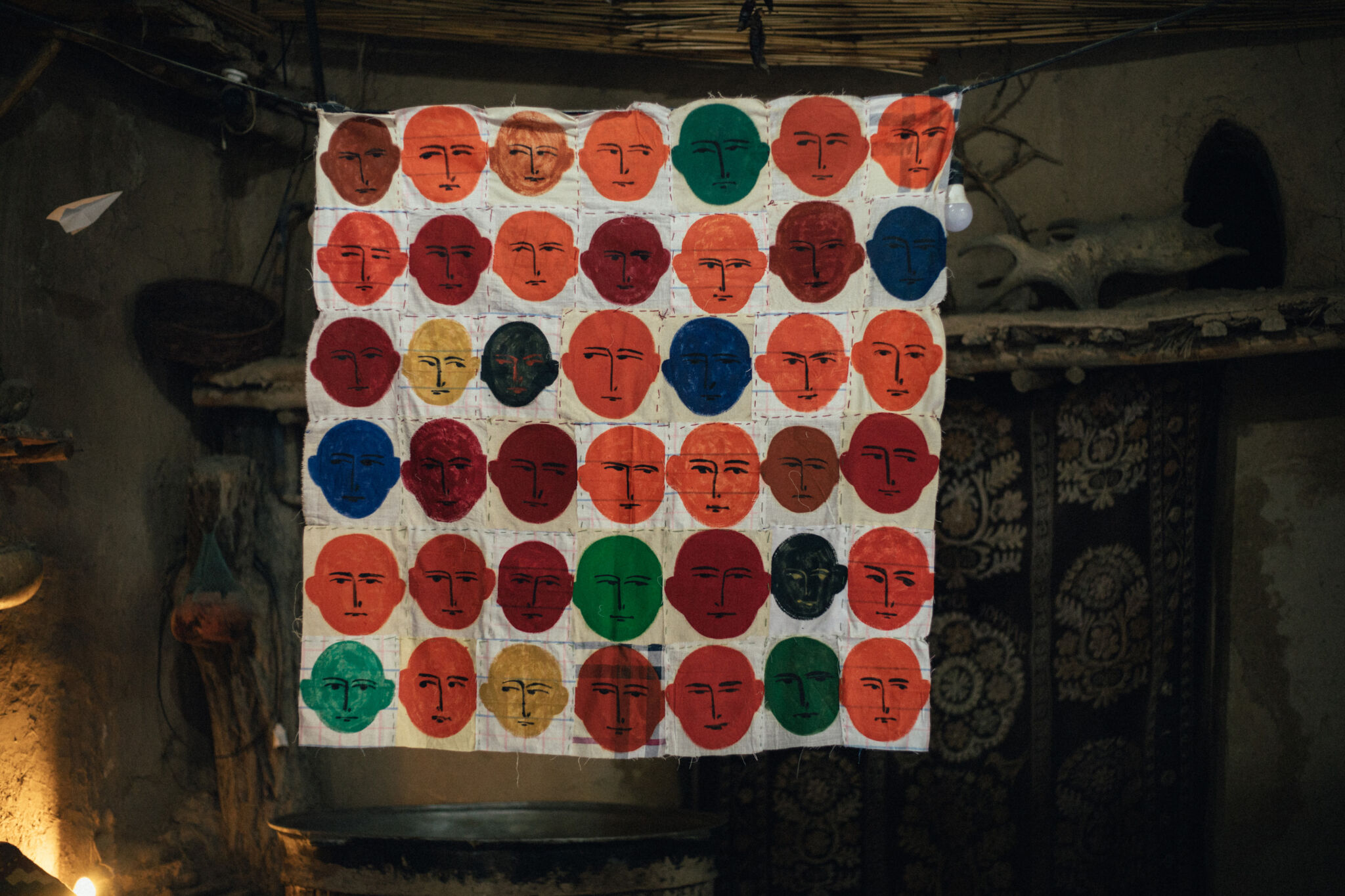
"People Who Will Say Something" is that dreadful phrase that changes the fate of people, and someone gives up on their goal, dream, or plans. That’s why I thought, who are these people, and I decided to paint them," Laziza ironically explains her concept.
Khurshed Khalilov
The main feature of Samarkand artist’s style is rethinking the surrounding world through the prism of his personal perception. He constantly experiments, moving from classical academicism to abstractionism and conceptualism. In his works, he reinterprets Eastern cultural traditions with a modern approach, simplifying them to basic forms, as if purifying the space and leaving only the most important. This approach resonates with the searches of the masters of the Turkestan avant-garde.

Although Djama Adylov’s paintings use motifs of “grotesque horror,” they are based on classical expressionism – a style where the main focus is the expression of emotions, not exact representation. His works stand out with a special plastic language, unique style, vivid colors, and unusual placement of characters in space.
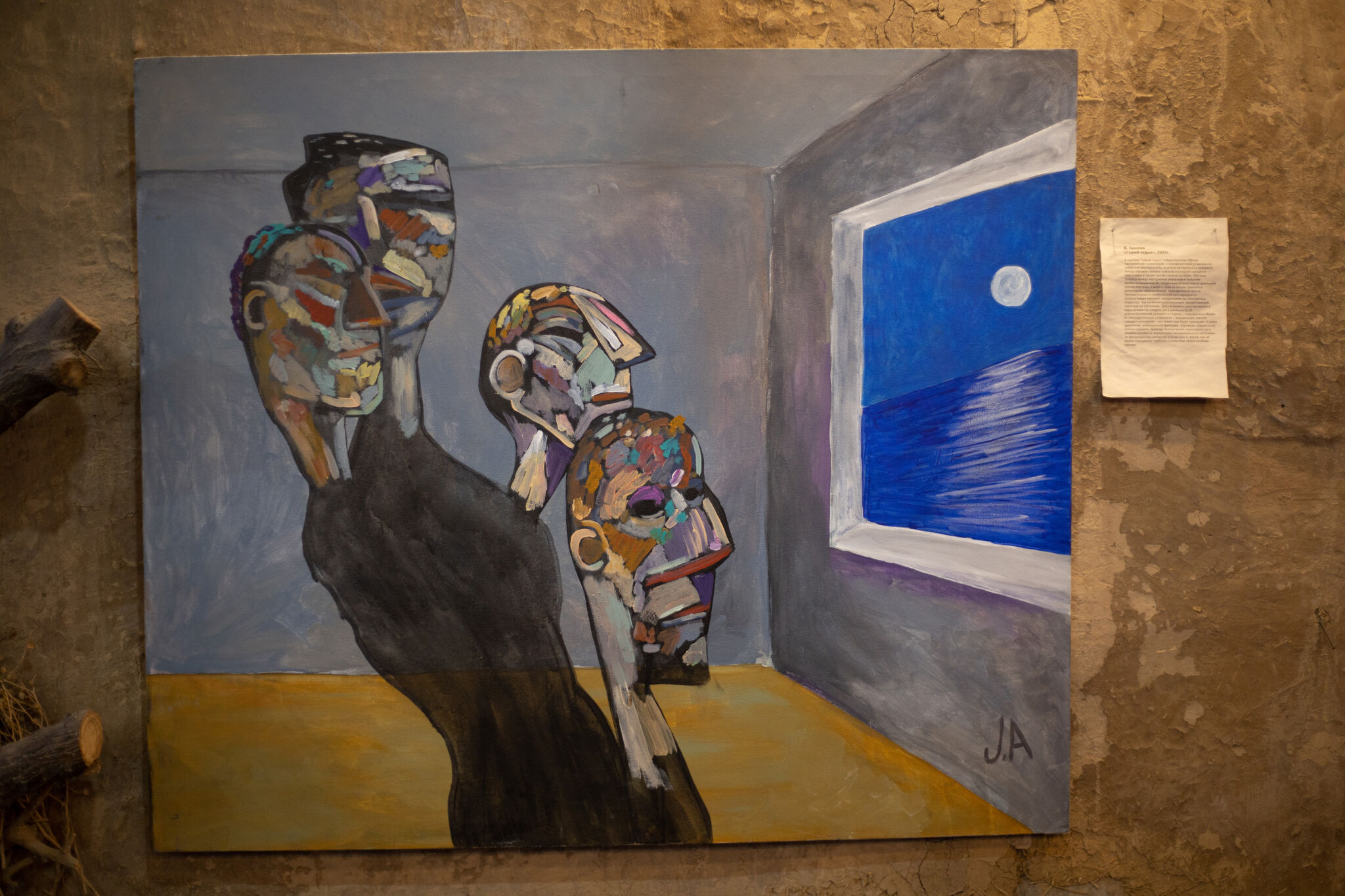
Tamilla Sultanova
In the painting "Dreams of Quince," tradition appears as a complex labyrinth of images and visual symbols, united in an intricate mosaic. At the center is the quince, one of the oldest fruit crops, known to humanity for over 4,000 years. Apparently, this inspired the artist to make the quince a kind of "vault" of memories collected over many years and poured to the surface from the depths of the subconscious.
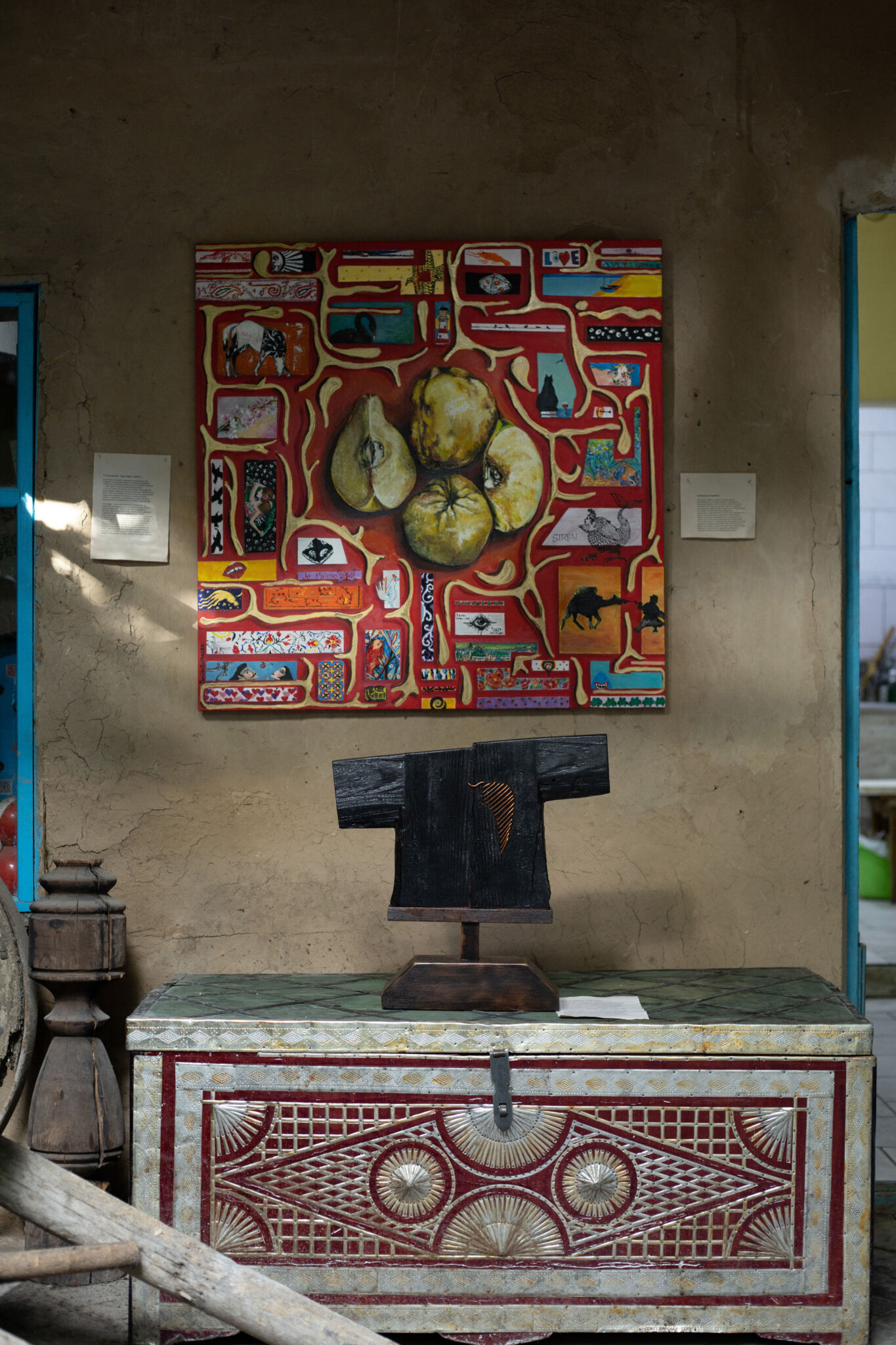
Daniyar and Sharifa Sharakhodjaeva present a series of wooden works in which the chapan is embodied as a symbol of Eastern cultural tradition. Instead of the familiar textile texture, wood is used, emphasizing the stability and eternity of the foundation of tradition, similar to the rings of a tree that preserve the memory of the years lived.

The main material of the artist is embroidery, but unlike the traditional perception of hand embroidery as a craft or hobby, she views fabrics as special canvases of life, on which different plots and personal interpretations of events are woven with a delicate thread.
Her work "Return" reflects the associative reflections of the artist about returning home. The swallows, which were near her, reminded her of her native home and mentally took her back to well-known lands.
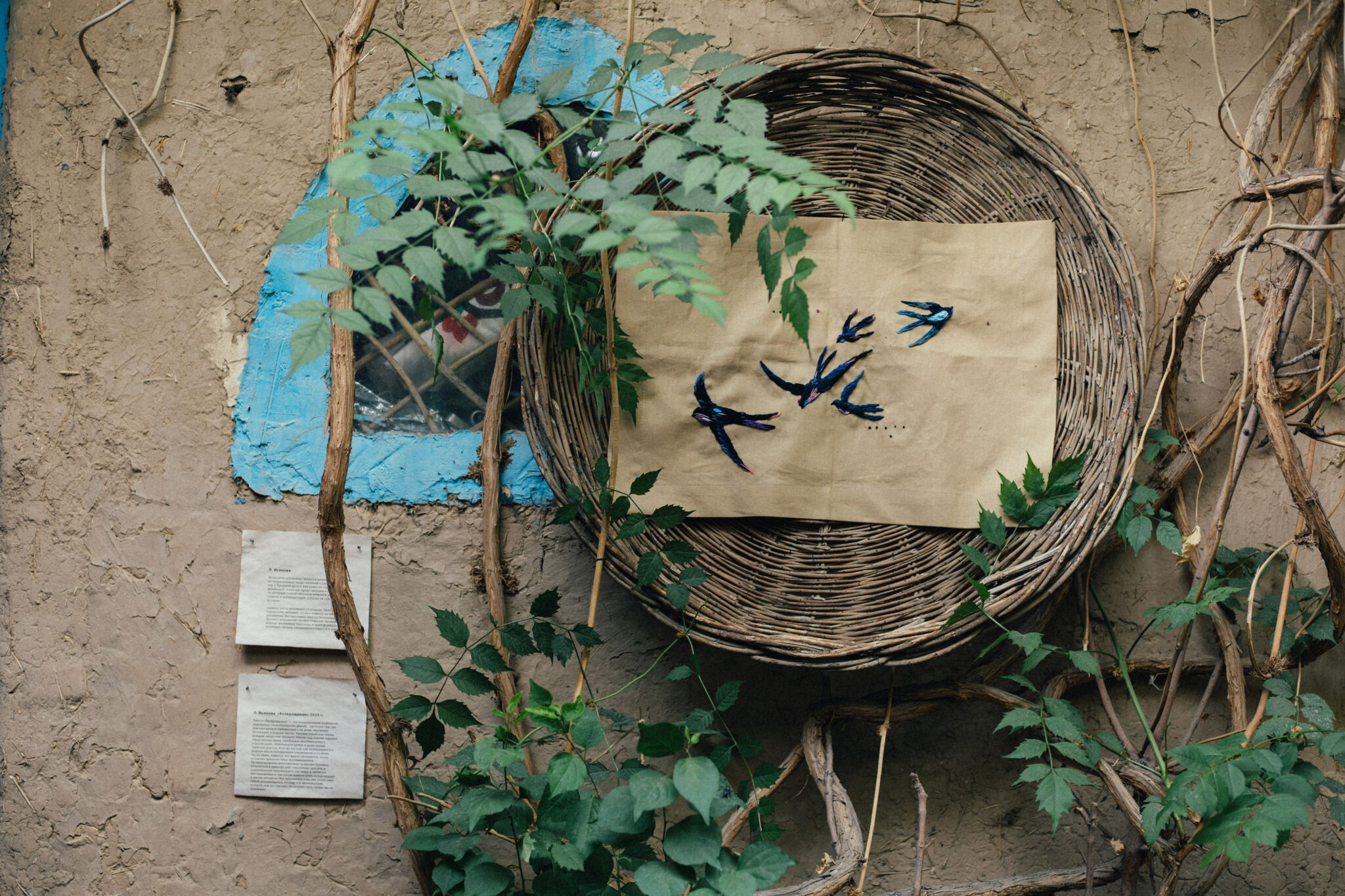
Anvar Choriqulov
A young artist from Bukhara, Anvar Choriqulov, has developed a unique style that conveys the landscapes and life scenes of his native city.
His abstract paintings show tradition in a new way – not through familiar symbols or images, but through space that exists here and now, yet seems to dissolve in time and colors.
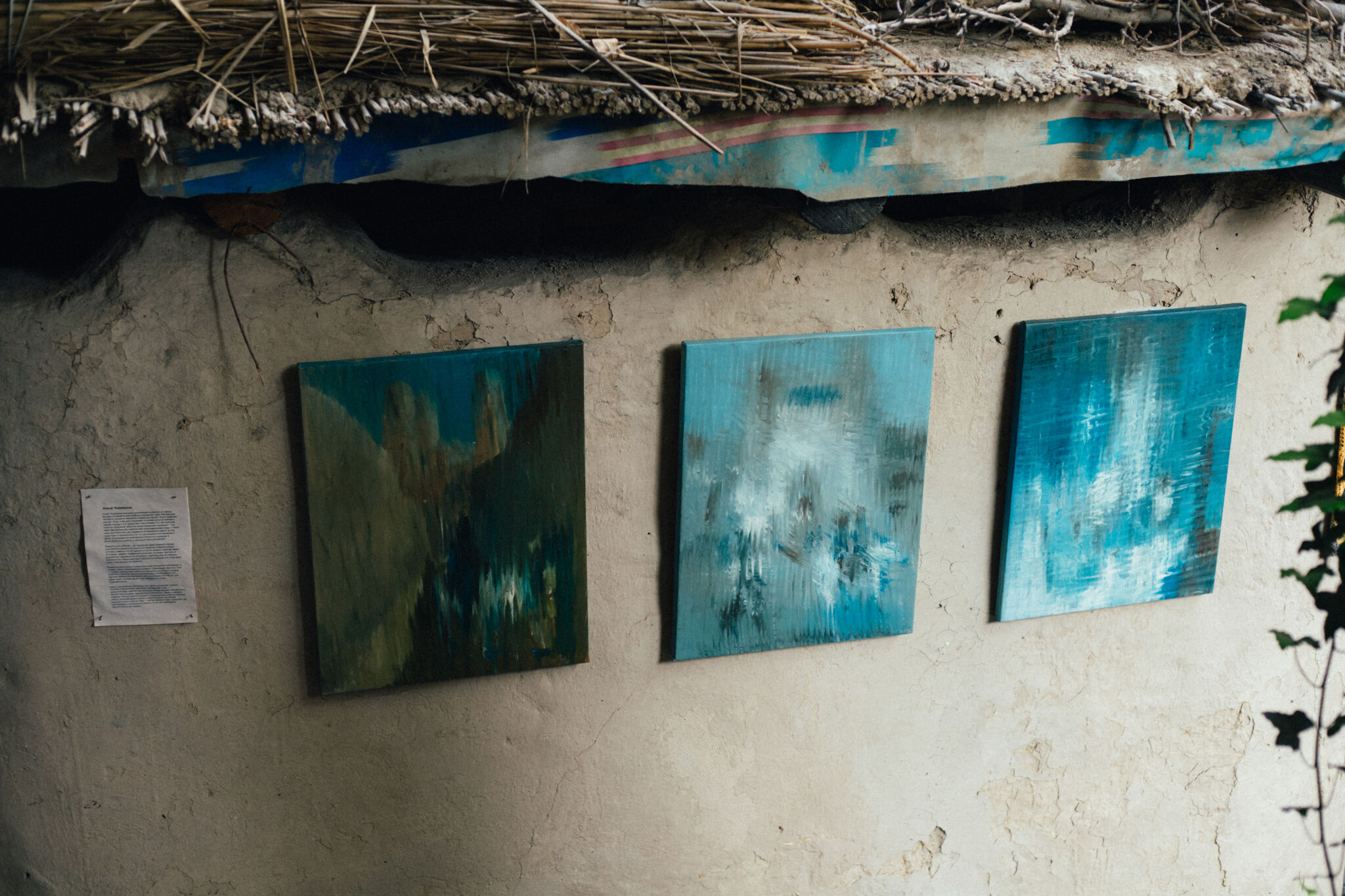
Photo: Anastasiya Kravchenko
